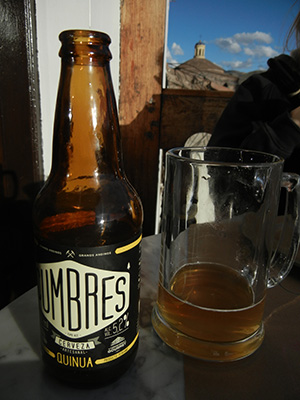
Lima’s a huge city by any standard. Like Los Angeles, it’s coastal and sprawling, with quarters as upscale as any American or more specifically European city (think Barcelona) and neighborhoods that border on shanty-towns. The Peruvian people that I met were wonderful and the craft beer and Coca leaves weren’t half-bad either.
With a population approaching 9 million, Lima is the capital and the largest city in Peru. It’s also home to the majority of the region’s craft brewers as far as I could tell. It’s no surprise that big beer brands dominate here. Peru’s Budweiser is Cusqueña, a Golden Lager that’s pretty much everywhere. Equally prevalent is their popular Pilsner, Pilsen Callao. And given that craft beer in Peru is not even close to being widely distributed, I found myself drinking both brands a lot – and both beers were enjoyable enough for what they were.


Now let’s talk Coca leaves. I had my first Coca tea upon arriving at my hotel in Cuzco. Located in the southeastern region of Peru, near the Urubamba Valley of the Andes mountain range, Cusco stands at 11,200 ft., and altitude sickness is a very real possibility. Coca tea is served widely there to combat altitude sickness. And since the altitude left me weak and woozy, I drank it non-stop. I wouldn’t say that the tea made me any more alert, but it did do something and I did feel better as long as I continued to drink it.
But the effects of chewing Coca leaves were a different matter all together…
Chewing Coca leaves correctly (I knew the Fodor’s travel guide would be good for something), does create more alertness and energy, which explains why the locals of all ages who traverse this mountainous region use it frequently and abundantly. And having experienced the Coca leaf’s benefits while climbing around Machu Picchu, I can attest to its value and am totally on board.
So here’s the buzz on the buzz in Peru. The craft beer scene, although still in its infancy, shows much promise. What they’re doing, they are doing right. And the Coca scene is far from new – it’s ancient, as a matter of fact. And trust me…they’ve totally got that one down.
 American Craft Beer The Best Craft Beer, Breweries, Bars, Brewpubs, Beer Stores, And Restaurants Serving Serious Beer.
American Craft Beer The Best Craft Beer, Breweries, Bars, Brewpubs, Beer Stores, And Restaurants Serving Serious Beer.
